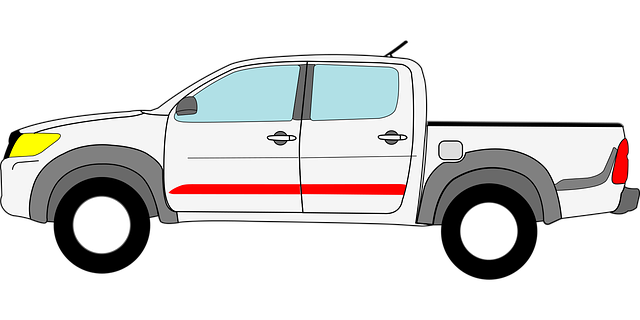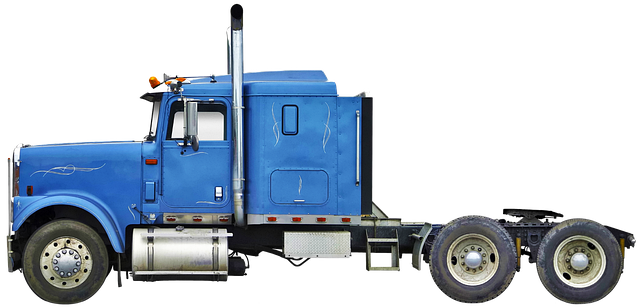When the engine roars to life or powers down after a long day’s work, it’s your truck battery that’s at the helm. Understanding how to maintain and replace this critical component is essential for any truck owner. This comprehensive guide demystifies the process of selecting and installing a new truck battery, ensuring you keep your vehicle’s power supply robust and reliable. From recognizing when it’s time to switch out your old battery to choosing the right type for your truck’s needs, we cover all the bases. Learn the signs to watch for, pick the perfect replacement, and follow our step-by-step instructions for a hassle-free installation. Keep your truck running strong with our expert advice on maintaining your battery’s performance over time.
- Understanding Your Truck's Battery Needs: A Beginner's Overview
- Signs It's Time to Replace Your Truck's Battery
- Types of Truck Batteries and How to Choose the Right One
- Step-by-Step Guide to Safely Remove Old Truck Batteries
- Installing a New Truck Battery: A Detailed, Jargon-Free Walkthrough
- Maintaining Your Truck Battery for Long-Term Reliability and Performance
Understanding Your Truck's Battery Needs: A Beginner's Overview

When addressing the needs of your truck’s battery, it’s crucial to consider the specific requirements of your vehicle’s make and model. A truck battery, unlike its passenger vehicle counterpart, is designed to handle the more demanding electrical loads that come with larger engines, more powerful starters, and additional accessories such as winches or advanced audio systems. As a beginner, understanding the type of battery your truck uses is the first step. Trucks typically use either a standard flooded lead-acid battery or an absorbed glass mat (AGM) battery. The latter is often preferred for its longer lifespan, resistance to vibrations and shocks, and maintenance-free design. Additionally, trucks with advanced features or those that are used frequently may require a high-performance AGM battery to ensure consistent starting performance in various weather conditions.
To determine the right truck battery for your vehicle, you should consult your owner’s manual or a reliable automotive resource. The manual will provide specifications such as the battery group size and cold cranking amps (CCA) required for your make and model. CCA measures the battery’s ability to start an engine in cold temperatures, so if you live in or frequently travel through regions with harsh winters, this specification is particularly important. Another consideration is the reserve capacity (RC), which indicates how many minutes the battery can deliver a minimum of 25 amps without falling below 1.75 volts per cell. The right battery not only ensures your truck starts reliably but also keeps its electrical systems operational, from the headlights to the audio system. Regular maintenance, such as checking the battery’s charge and cleaning the terminals, will also extend its lifespan and ensure it meets your truck’s needs effectively. Remember to replace your truck battery every 3 to 5 years, or according to the manufacturer’s recommendation, to maintain optimal performance.
Signs It's Time to Replace Your Truck's Battery

When your truck’s battery starts to show signs of wear and inefficiency, it’s crucial to recognize these indicators early to avoid unexpected breakdowns or electrical issues on the road. One of the most apparent signs that your truck battery may need replacement is a sluggish engine crank. If your vehicle takes longer than usual to start, or you notice a noticeable decrease in cranking power, it could indicate that the battery’s capacity is diminishing. Regular maintenance checks can help identify this issue; a professional can test the battery’s voltage and amperage to determine if it’s still holding a charge effectively or if it’s time for a new truck battery.
Another clear indication that your truck’s battery might be nearing the end of its lifespan is when you observe an erratic dashboard light, typically the battery warning light or check engine light. This warning signal can also be triggered by other issues, so it’s important to have the vehicle checked promptly by a qualified technician. Additionally, if your truck battery is more than three to five years old, it’s advisable to consider a replacement, as batteries typically have a lifespan and can fail after this period regardless of their condition. Regular monitoring of your truck’s electrical components and adhering to recommended maintenance schedules can help ensure that your vehicle’s battery operates at peak performance or that you can identify when it’s time for a truck battery replacement.
Types of Truck Batteries and How to Choose the Right One

When addressing the need to replace your truck’s battery, understanding the types of truck batteries available is crucial for making an informed decision. There are primarily two types of truck batteries: standard lead-acid and absorbed glass mat (AGM) batteries. Lead-acid batteries have been in use for decades and offer a reliable and cost-effective solution for powering your truck’s electrical systems. However, AGM batteries are a more advanced option, known for their durability, long life, and high tolerance for extreme temperatures and vibrations commonly encountered in trucks. They also feature a spill-proof design and can hold a charge longer than traditional lead-acid batteries.
Selecting the right truck battery requires considering your truck’s specific needs, including its size, model, and usage patterns. Factors such as the type of driving you do—whether it’s city driving with frequent short trips or long highway drives—will influence the battery’s performance and lifespan. For instance, if your truck is often subjected to harsh climates, an AGM battery might be more suitable due to its ability to function optimally in both hot and cold conditions. Additionally, consider the electrical demands of your truck. If you have accessories like a winch, a sophisticated audio system, or other power-consuming features, a higher ampere-hour (Ah) rating will ensure your battery can handle the additional load without running down prematurely. Always refer to your truck’s manufacturer specifications to select a battery that fits your vehicle’s electrical requirements and ensures optimal performance on the road.
Step-by-Step Guide to Safely Remove Old Truck Batteries

When it comes time to replace your truck’s battery, safety and precision are paramount. The following step-by-step guide is designed to help you remove your old truck battery securely and efficiently. Begin by parking your truck on a level surface and ensuring that you have all the necessary tools at hand. These typically include a wrench or socket set, gloves for protection, eye protection, and the new battery. Before proceeding, disconnect the negative terminal first, using the wrench to loosen the nut that secures it to the battery post. Make sure the Clock is off to prevent any data loss if your truck has such a feature. Next, carefully remove the positive terminal in the same manner, ensuring no metal tools come into contact with each other or the battery terminals, as this can cause a short circuit and pose a safety risk. Once both terminals are disconnected, remove the hold-down clamp that secures the battery in place. Lift the battery out cautiously to avoid spilling any acid in case of a ruptured cell. Dispose of the old battery properly according to local regulations, as batteries contain harmful substances that can damage the environment. With the old battery removed, you are now ready to install the new truck battery following the reverse process, ensuring tight connections and proper alignment before finally securing it in place. Remember to work in a well-ventilated area and always refer to your specific truck’s service manual for any specific instructions or precautions related to your vehicle’s electrical system.
Installing a New Truck Battery: A Detailed, Jargon-Free Walkthrough

When the time comes to install a new truck battery, it’s essential to approach the task methodically to ensure both your safety and the longevity of your vehicle’s electrical system. Before you begin, gather all necessary tools and equipment, which typically include a new battery suitable for your truck model, pliers, a wrench set, a battery terminal cleaner, protective gloves and eyewear, and a battery hydrometer (if checking the battery’s charge level).
Start by safely parking your truck on a flat, stable surface and engaging the parking brake. Switch off the vehicle and disconnect the negative (-) battery terminal first to prevent any electrical shorts or potential damage to the truck’s electronics. Use the wrench to loosen but not remove the nut that secures the negative cable to the battery. Do the same for the positive (+) terminal, ensuring you keep the cables in place to avoid any accidental short circuits. Once both terminals are disconnected, carefully remove the old battery, taking note of its positioning for reference when installing the new one.
With the old battery out, clean the battery tray and mounting area where the new battery will be placed. Inspect the connections and cables to make sure they’re in good condition; replace any that are worn or damaged. Now, place the new truck battery in position, ensuring it’s correctly aligned with the battery tray. Secure the battery with its hold-down clamp or strap. Reconnect the positive terminal, tightening the nut securely, and then proceed to reattach the negative terminal, again ensuring a snug fit. After installation, clean all terminals and connections with the battery terminal cleaner to remove any corrosion or residue.
Finally, use the battery hydrometer to test the charge level of the new battery if applicable. If the charge is below specifications, you may need to recharge the battery before use. Always consult your truck’s manual for any specific installation instructions related to your model. With these steps, you can confidently replace your truck’s battery, ensuring it operates efficiently and reliably.
Maintaining Your Truck Battery for Long-Term Reliability and Performance

Navigating the process of replacing a truck battery can seem daunting, but with the right knowledge and steps, it’s a task that any beginner can handle confidently. This guide has illuminated the key aspects from understanding your truck’s battery needs to selecting the ideal replacement, removing the old battery safely, installing a new one, and maintaining it for peak performance. Remember, choosing the right truck battery is pivotal for your vehicle’s reliability on the road. By adhering to the advice provided, you can ensure that your truck’s battery operates at its best, safeguarding against unexpected electrical issues. With these tools and insights, maintaining your truck’s power supply has never been easier or more accessible.



